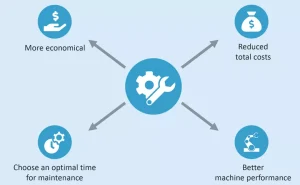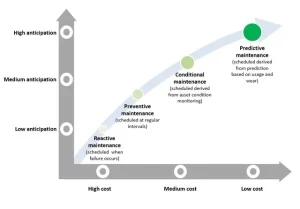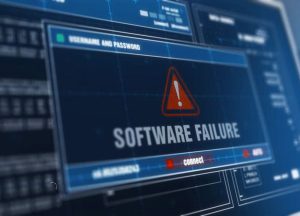Predictive Maintenance in Software Development
Introduction In the fast-paced world of software development, ensuring smooth functionality and user experience is of utmost importance. However, despite careful planning and ...

Introduction
In the fast-paced world of software development, ensuring smooth functionality and user experience is of utmost importance. However, despite careful planning and thorough testing, software problems can still occur, causing crashes, downtime, and frustration for users. However, with the advancement of technology and the rise of predictive maintenance, developers now have a powerful tool at their disposal to predict and prevent these problems before they occur.
Understanding Predictive Maintenance
Predictive maintenance is a proactive approach to maintenance that uses data analytics, machine learning, and artificial intelligence to predict potential equipment or system failures. Originally developed in manufacturing and industrial operations to optimise the maintenance of physical equipment, predictive maintenance has now found its way into software development.
In the context of software, predictive maintenance involves analysing massive amounts of data generated by applications, systems, and infrastructure to identify patterns and trends that may indicate potential problems. Using this data and applying predictive algorithms, developers can anticipate and fix software problems before they become critical failures.

The Evolution of Software Maintenance
Traditionally, software maintenance has been reactive and involved manually identifying and fixing problems after they occur. This approach often results in costly downtime, reduced productivity, and a negative user experience. Moreover, as software systems become increasingly complex and interconnected, the task of identifying and fixing problems becomes even more difficult.
Recognising the limitations of reactive maintenance, the software industry is gradually moving toward a more proactive approach. This evolution began with the adoption of preventative maintenance strategies that include regular audits, updates, and patches to proactively address known vulnerabilities and deficiencies.
However, preventive maintenance alone is not enough to cope with the dynamic nature of modern software ecosystems. Enter predictive maintenance, which represents a new frontier in software maintenance practices. Using the power of data analytics and machine learning, predictive maintenance allows developers to identify anomalies, predict failures, and take proactive steps to reduce risks.

Anticipating Software Issues
One of the key benefits of predictive maintenance in software development is its ability to anticipate and identify potential problems before they affect users. By analysing historical data, monitoring system performance in real time, and using advanced algorithms, developers can detect subtle signs of problems that may go undetected by traditional monitoring tools.
For example, preventative maintenance can help identify patterns of system performance degradation, such as increased response times, memory leaks, or resource bottlenecks. By noticing these early warning signs, developers can proactively intervene to optimise performance, allocate resources more efficiently, or implement preventive measures to avoid system failures.
Moreover, preventative maintenance can also reveal hidden defects or vulnerabilities in the codebase that may pose a security risk or lead to unexpected behaviour. By performing automated code analysis, static and dynamic testing, and vulnerability scanning, developers can identify and fix potential vulnerabilities before they are exploited by attackers.
Preventing Software Failures
In addition to predicting software problems, predictive maintenance gives developers the ability to take proactive measures to prevent failures from occurring. Using predictive analytics and machine learning models, developers can predict the likelihood of specific failure scenarios and prioritise their efforts accordingly.

For example, predictive maintenance can help identify critical components or subsystems at risk of failure and take proactive steps to improve their resilience. This may include code refactoring, algorithm optimisation, or architecture redesign to improve fault tolerance, scalability, and reliability.
Additionally, predictive maintenance allows developers to implement predictive alerting and automatic remediation mechanisms to quickly respond to problems that arise. By integrating monitoring tools with predictive models and decision support systems, developers can automatically trigger alerts, notifications, or corrective actions when anomalies are detected, minimising the impact on users and preventing widespread outages.
Issues and Considerations
Although predictive maintenance promises great potential for improving software reliability and performance, its implementation is not without challenges. One of the main obstacles is the difficulty of managing and analysing large volumes of data generated by software systems. To effectively harness the power of predictive analytics, developers must invest in robust data collection, storage, and processing infrastructure, as well as advanced analytical tools and expertise.
Moreover, predictive maintenance requires a cultural shift within organisations towards a more data-driven and proactive approach to software development and operation. This may include overcoming resistance to change, promoting collaboration between development and operations teams, and investing in training and upskilling employees in data science and machine learning techniques.
In addition, ethical considerations regarding data privacy, security, and transparency must be carefully considered to ensure responsible and ethical use of predictive maintenance technologies. Developers must adhere to best practices in data governance, consent management, and algorithmic fairness to reduce the risks of bias, discrimination, and privacy violations.
Conclusion
The move to predictive maintenance represents a paradigm shift in software development, allowing developers to anticipate and prevent software problems with greater accuracy and efficiency. Using the power of data analytics, machine learning, and artificial intelligence, developers can proactively identify vulnerabilities, anticipate failures, and take proactive measures to ensure the reliability, performance, and security of software systems.
As software systems continue to evolve and become more complex, predictive maintenance will play an increasingly important role in shaping the future of software development and maintenance.